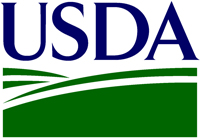 The U.S. Department of Agriculture (USDA) says ethanol production is more efficient than ever.
The U.S. Department of Agriculture (USDA) says ethanol production is more efficient than ever.
In an interview with USDA radio, Harry Baumes, Director of USDA’s Office of Energy Policy and New Uses says a new study shows that we’re getting more energy out of corn than what it takes to raise the feedstock and make the green fuel. One reason is a decreased amount of nitrogen being used to grow the corn.
 “We’ve also become more efficient at converting corn into ethanol. Back in the early [1980s], you got about 2.2 gallons of ethanol per bushel of corn. Now, you get closer to 2.8 gallons of ethanol per bushel of corn.”
“We’ve also become more efficient at converting corn into ethanol. Back in the early [1980s], you got about 2.2 gallons of ethanol per bushel of corn. Now, you get closer to 2.8 gallons of ethanol per bushel of corn.”
That means for every one unit of energy used to produce corn and ethanol from it, you get about 2.3 units of energy out. And he expects that to get even better.
But some worry that food prices could spike, especially if the Environmental Protection Agency (EPA) allows the ethanol blend limits for most vehicles to be raised to 15 percent, E15. Economist William Lapp of Advanced Economic Solutions and a former chief economist of ConAgra (you know, the guys who were pushing this food vs. fuel debate for their own purposes) tells USDA radio that a situation in 2007 and 2008 could show what would happen if more corn is used for ethanol.
 “We had a dramatic surge in the price of corn, part of it was led by increases in ethanol demand, and we saw corn prices more than double during that time.”
“We had a dramatic surge in the price of corn, part of it was led by increases in ethanol demand, and we saw corn prices more than double during that time.”
Lapp contends that led to higher food prices for livestock, and, in turn, higher prices at the grocery store. But Baumes says that higher prices on the farm end don’t translate in proportional increases at the super market.
“In the U.S., if the price of all goods at the farm gate DOUBLED, we would only see a 20 percent increase in the price of goods at the grocery store.”
Baumes points out that if some of that corn is used for transportation fuels, consumers will see more money in their pockets in the form of more stable energy prices. In addition, he points out that the corn used in ethanol has dual uses in the form of the dried distillers grains that can be fed to livestock after the ethanol has been drawn out. Plus, there are other feedstocks that can be used for ethanol production.

